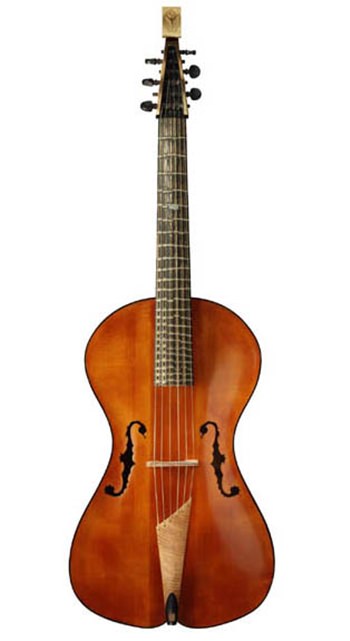It is surprising the number of instruments that have fallen out of favour over the years. For over two hundred years the most influential bowed stringed instruments in Western European music were the viols – a whole family of them. They appeared in the early years of the sixteenth century and became tremendously popular, especially for do-it-yourself music making.

Contrary to popular belief, the viols were not the predecessors of the violin family. The violin first appeared around 1530 and the viol and violin families coexisted happily for about two hundred years. Eventually however, the violin family eclipsed that of the viol because they were not only louder but had a brighter tone quality which was more appropriate for the musical styles of the day. The viols eventually disappeared altogether but were revived in the twentieth century to meet the renewed interest in early music.
You might have encountered early European instruments like the crumhorn, the cornemuse, the dulcian and the racket, less charmingly known as the sausage bassoon. They disappeared generations ago but like the viols were revived in the twentieth century. Over the years, various other musical oddities have come and gone. The glass harmonica enjoyed brief popularity during the eighteenth century. It used rotating glass bowls to produce its sound and an improved treadle-operated version was invented in 1761 by Benjamin Franklin (yes, the famous one). Many major composers including Mozart and Beethoven wrote pieces for the instrument before it faded into obscurity.
During the nineteenth century some instruments, especially woodwind and brass underwent a kind of Darwinian evolution and gradually became transformed into those we have today. This period also saw the appearance of many new instruments including oddities like the sarrusophone, an elephantine contraption which vaguely resembled a contrabass clarinet but is now extinct. One instrument which had the dubious distinction of surviving for only about ten years, was the arpeggione.
It would be hardly worth learning to play the arpeggione, because only one piece by a major composer was ever written for it. The instrument was invented in 1823 by the Viennese instrument-maker Johann Georg Staufer. It was a peculiar hybrid with six strings, a fretted fingerboard, tuned like a guitar, bowed like a cello and held between the knees. It never really caught on, perhaps because of its resemblance to the older viola de gamba which by the nineteenth century was probably considered somewhat passé. More importantly, the arpeggione had technical limitations and could barely handle the wide range of dynamics and expressiveness required by composers of the time.
Schubert composed this sonata in 1824 for his friend Vincenz Schuster, a rare virtuoso of the arpeggione when the newly-invented instrument was creating some interest. Unfortunately, by the time the sonata was published posthumously in 1871 the enthusiasm for the arpeggione had long since disappeared along with the instrument itself. Today, the sonata is usually heard in transcriptions for cello and piano.
Interestingly the first three notes of the main theme are the same as those of Schubert’s Eighth Symphony which dates from a couple of years earlier. The first movement is light and airy; typically full of delightful melodies. The slow movement (at 11:11) sounds at first like Beethoven but has Schubert’s unmistakable song-like touch and contains one of the most fragile and plaintive melodies that he wrote. You might even find yourself reaching for the Kleenex. The music grows in strength and confidence passing through surprising key changes and prepares for the energetic and complex final movement which contains a wealth of melody.
If you are whizz-kid with those Mozart “K” numbers you’ll probably know that K311 is a piano sonata dating from 1777. The balalaika version is a transcription because as far as we know, Mozart didn’t write anything for balalaika. If he did, he didn’t tell anyone. It’s a Russian three-stringed plucked instrument with a characteristic triangular-shaped body. As you might expect, there’s a whole family of them ranging from the rarely-seen piccolo model to the enormous contrabass balalaika which is over five feet long. They’re played either with the fingers or a plectrum depending on the style of music being played.
Nikolai Kovalevich is clearly a hugely talented musician and obviously finds a great deal of fun in what he’s performing, although for some reason the organist is decked out in period costume and wears a wig. Balalaika orchestras remain popular in Russia and unlike the long-defunct arpeggione the balalaika is alive and well. You can even buy one from Amazon together with an instruction book.
 |
 |
 |





